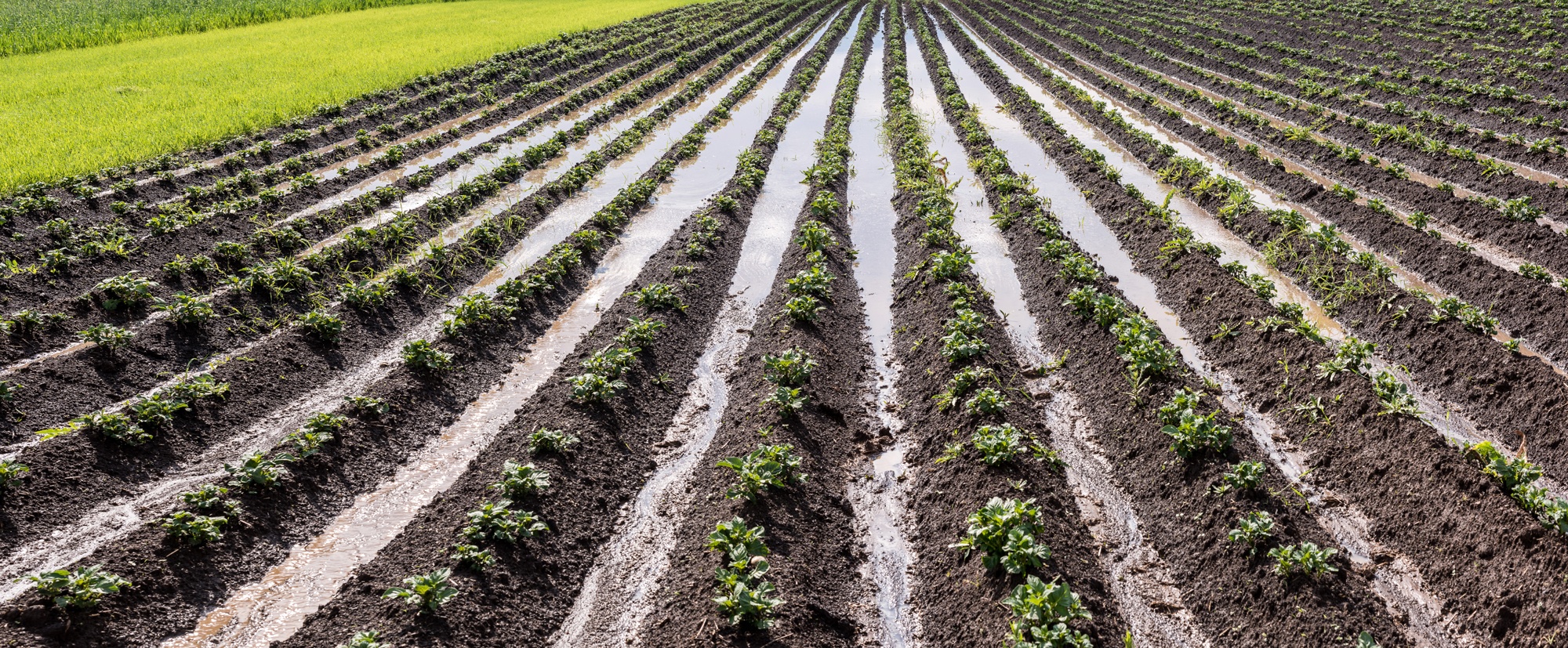Perceptions of unusual weather events
The frequency of unusual weather events around the world is increasing; just think of the latest Atlantic hurricane season. Extreme events occur at the tail ends of the statistical distribution, are patchy in nature and too rare to be directly linked to climate change. Simulations with climate models, however, show that in a warmer climate the probability of heat waves and excess rainfall increases as the water cycle intensifies.Adverse weather events occur more frequently such that statements about the rising trend of average temperature and precipitation intensity can be made with greater certainty. In Belgium, this year’s late frost in April led to serious damage claims in the hard fruit sector, while spring drought caused water shortages and subsequent irrigation stops. In contrast, last year’s excess rainfall in June resulted in waterlogged fields and yield loss. All of these adverse events exceed the 20-year return period.

Rainfall deficit maxima and spatial 20-year return periods. More results can be found in the published paper.
The impact on farming
Unusual weather events and their related agricultural damages have always captured the interest of the general public. Impacts on agriculture depend not only on the type of the event. There are many other factors to keep in mind:- its relation to the farming calendar
- the crop and variety
- the soil-landscape
- the environment
- farm management
Selected weather risk assessment for different crop stages of potato.
RP20 is 20-year return period.
Digital farming
The complexity calls for big data analysis that includes data on all of the above factors. A lot of data are available on the input side, but very few on the output. In addition, current data driven models have predominantly concentrated on dealing with impacts on yields at the regional scale, whereas damages are expressed in yield loss at the field scale.A new era of satellite remote sensing and sensor technology has already offered a paradigm shift towards data rich environments with unprecedented possibilities to monitor crop status at higher spatial, temporal and spectral resolutions. VITO Remote Sensing currently explores these possibilities in WatchItGrow®.
Combining crop modelling and statistical analysis with monitoring from remote sensing presents new business opportunities to deliver risk assessments to the insurance industry supporting our farmers that are faced with ever more increasing unusual weather events.

Crop status monitoring during the growing season using a greenness index.




/Blog_CORSA_1200x650.png)
/Blog_WorldCereal_1200x650.png)
/lewis-latham-0huRqQjz81A-unsplash.jpg)